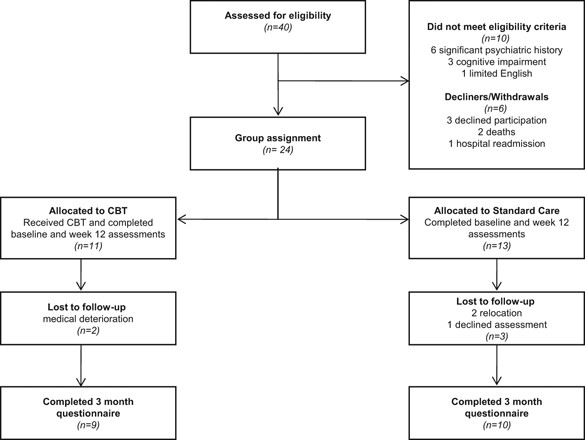
- Select a language for the TTS:
- UK English Female
- UK English Male
- US English Female
- US English Male
- Australian Female
- Australian Male
- Language selected: (auto detect) - EN
Play all audios:
The number of older workers is projected to grow significantly over the next decade, and understanding older workers’ needs and concerns will benefit workers and employers. Older workers
bring a wealth of experience and knowledge to the table. According to AARP, the OECD and the World Economic Forum’s global employer survey, more than half (53%) of executives surveyed do not
include age in their Diversity and Inclusion policy. Including age in diversity, equity and inclusion (DEI) strategies signals a recognition that age is an important dimension of DEI. As
noted in an AARP blog, it is important for improving inclusion, for staff planning, for building teams, and for improving communication. It can also help companies avoid age-discrimination
complaints. The exclusion of age in DEI strategies suggests that more work is required to achieve a level playing field in the workplace. UNDERSTANDING AGE DISCRIMINATION HE WAS TOLD BY A
RECRUITER THAT HE WAS “VIRTUALLY UNMARKETABLE” GIVEN THAT HE IS SO CLOSE TO RETIREMENT. Age discrimination refers to unfair treatment, bias or prejudice directed toward individuals based
upon their age. The Age Discrimination in Employment Act (ADEA) prohibits discrimination against workers ages 40 and older. While it may affect people at various stages of life, older
workers are particularly vulnerable to such discrimination. In fact, three in five workers ages 40 and older (64%) report having seen or experienced age discrimination in the workplace.
Negative stereotypes and misconceptions related to aging often lead to assumptions that older workers are resistant to change, less competent with technology, or lack creativity compared to
their younger counterparts. But the opposite is true—in a global study among workers ages 25 and older, results show that older workers are less likely than younger workers to report
difficulty with technological aspects of remote work. And, based upon a study by Multi-Health Systems Inc., adults ages 60 and older are just as likely to welcome or resist change when
compared to adults between ages 20 and 29. These biases can severely limit employment opportunities and hinder the career progression of older workers. _AARP hears from many older workers
who have been pushed out of longstanding jobs and have significant challenges in finding work. One man, whose name was withheld to protect his identity, was let go from his job in 2023 at
age 63, after being recruited to the company 13 years earlier. He said he had no advance warning and was told the company had to restructure and make tough decisions. While he had no proof
that age was a factor, he suspected it was. After speaking to an employment attorney and learning how difficult it is to litigate age discrimination, he decided to accept a severance offer.
Since then, his job search has turned up nothing. He was told by a recruiter that he was “virtually unmarketable” given that he is so close to retirement._ Evidence demonstrates that age is
a factor in the hiring process. In a 2020 study on “age-blind” hiring procedures, older applicants were more likely to be selected than younger applicants in the application process, whereas
older applicants in the non-age-blind group faced a lower rate of job offers when age was transparent. Also, AARP found that more than half (53%) of workers ages 40 and older said they were
asked by an employer to provide their birth date, graduation date(s) or other age-related information during the application or interview process, while one in five (22%) said they had been
passed up for a promotion or a chance to get ahead because of their age. Negative comments about age at work are also fairly common. Since turning 40, 24% of workers ages 40 and older have
heard negative comments about their age from a colleague, and 19% have heard negative comments about their age from a supervisor. And the situation is not likely to improve any time soon
because older workers rarely report age discrimination—as they think it would not make a difference or they fear repercussions. We found that only 13% of workers ages 40 and older have made
a complaint to a supervisor, human resources representative or another organization or government agency about age discrimination that they have seen or experienced in the workplace. THE
IMPACT OF AGE DISCRIMINATION Age discrimination not only affects the individual worker but also has wider consequences for society and for the economy. Here are a few key points to consider:
_BUSINESS PERFORMANCE_ By excluding older workers from the workforce based on their age, businesses miss out on the vast knowledge, skills and experience these individuals bring, as well as
the unique perspectives, problem-solving abilities, and institutional memory they possess. This leads to a loss of productivity and dampens economic growth potential. According to the
Global Longevity Economy Outlook report, in 2020, older workers contributed about $45 trillion to the economy worldwide. To retain talent of all ages, employers must examine what workplace
characteristics workers are looking for in a job and what motivates them to seek job-related changes. AARP found that older workers rank the opportunity to use their skills and talents as a
top job requirement before accepting a job. _FINANCIAL INSTABILITY_ Not hiring older workers has a significant impact on the economy, as well as on all generations. Age discrimination can
push older workers into premature retirement or force them into accepting lower paying jobs. This can lead to financial instability and place a strain on retirement savings—with workers not
saving as much for retirement and/or having to tap into their retirement savings earlier than they had planned. _MENTAL AND EMOTIONAL WELL-BEING_ The prevalence of age discrimination in a
rapidly growing aging society has far-reaching effects on the health of older adults. According to the World Health Organization, being subjected to age discrimination can have a profound
impact on an individual's self-esteem, confidence and overall mental health. The feelings of exclusion and insignificance can lead to increased stress levels and reduced job
satisfaction. In fact, a lack of appreciation was a key reason for leaving a job among older workers. COMBATING AGE DISCRIMINATION Overcoming age discrimination requires a collective effort
from individuals, organizations and policymakers. Here are some strategies to combat age discrimination and create an age-inclusive workplace: EMPLOYERS SHOULD INCLUDE AGE AS PART OF THEIR
DIVERSITY, EQUITY AND INCLUSION STRATEGY TO ENSURE THEY ARE CREATING AN AGE-INCLUSIVE WORKPLACE. _RAISE AWARENESS_ Organizations and employers should conduct training programs to educate
workers about the impact of age bias and promote a culture of diversity and inclusion. Education is the first step toward combating age discrimination. Human capital disclosures, which are
required for U.S. public companies, provide a mechanism for reporting information about workplace age. _UPDATE WORKFORCE POLICIES_ Employers should include age as part of their diversity,
equity and inclusion strategy to ensure they are creating an age-inclusive workplace. Consideration should be given to using age-neutral hiring practices (i.e., removing age-biased language
from job descriptions and not asking for age-related items in job applications), offering career development and training opportunities, as well as promotion opportunities to workers of all
ages. In addition, employers should review benefit programs to ensure they are age-inclusive. _STRENGTHEN AND ENFORCE LAWS_ Policymakers should strengthen and enforce age-discrimination laws
and ensure compliance in workplaces. Legal protection against age discrimination, along with rigorous enforcement mechanisms, can serve as deterrents and provide recourse for those
affected. _RECOGNIZE THE VALUE OF EXPERIENCE AND THE OPENNESS TO RESKILLING_ By highlighting the diverse perspectives and contributions that older workers offer, organizations can foster an
environment that values experience alongside other qualities. Employers should expand employment opportunities for older workers and ensure that they can update existing skills and develop
new ones. This would be welcome, as most workers ages 40 and older seek opportunities to learn new skills. It would also help employers, as the economy and labor market continue to evolve
and contend with labor shortages. And education policy and institutions need to do more to better support adult learners. _COLLABORATE ACROSS GENERATIONS_ Employers should encourage
collaboration and mentorship between older and younger employees, which can help break down age-related barriers. Research shows that four in five workers ages 40 and older report that the
opportunity to work with people of different generations is something they require in a job. This exchange of knowledge and skills benefits both parties and promotes a harmonious work
environment and greater job satisfaction. EMBRACING OLDER WORKERS BENEFITS INDIVIDUALS AND SOCIETY Age discrimination against older workers is a pervasive issue that demands our attention.
By recognizing and challenging age-related biases, fostering inclusivity, and harnessing the expertise of older workers, we can create a thriving, multigenerational workforce that benefits
both individuals and society. Embracing the experience of older workers not only enhances productivity, innovation and creativity, but also paves the way for a more equitable and inclusive
future for workers of all ages. Let’s break down the barriers of age discrimination and build a workplace that values individuals based on their abilities rather than their age.




